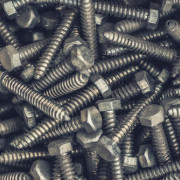Is Your Marine Equipment Constructed In The Best Way Possible?
The construction of marine equipment is usually thought of as a complicated technical process. However, the key to getting it right is making sure that you plan for the building process thoroughly. The types of materials you use for the project as well as how you choose to fasten them are issues that you should pay particular attention to, since they have a huge bearing in determining the overall success of the project.

When building devices such as mini submarines and machines that will be used at depths, there are a few principles you should ideally follow when doing such construction to reduce the risk of not doing it right. Some of these include:
Consider the pressure issues
The first thing you need to figure out is how the machine is going to contend with the pressures that are associated with use in water. This is especially so if they will be required to dive at very great depths. If the machine is going to be used in such conditions, you will need to make sure that things such as the fasteners will be able to withstand the pressures involved. For instance, you can get grade 2 steel cap nuts for the construction.
Remember that such items are likely to be corroded in such an environment
There is a high risk of corrosion when items are used in a marine environment. This means that you would need to consider the use of materials such as Monel 400 carriage bolts for fastening especially if this is going to be a major concern. The fasteners that are made out of this material tend to be very resistant to corrosion, which in turn means that they are likely to last longer when used in such an environment.
Keep in mind the physical forces that the device will be subjected to
There are times when the device will be subjected to a number of forces. For instance, when it has to be used very deep, it may scratch against the floor of the water body. When you are doing the design for the body, it’s important to keep this in mind to ensure that you end up with a device that can withstand this. Some of the important issues that need to be addressed to facilitate this include making sure that the fasteners used are put in place tightly, and that they are made of a material that can withstand all types of forces. The shape of the device can also play a role in this, since you can fashion it in such a manner that it will dissipate most of the impacts.
To avoid leaks, pay attention to joint integrity
If you need to design a product that will not leak, you may need to focus on making sure that the joints don’t leak. The use of the right type of washers in addition to other technologies can help with this.
By the time you do all the above, chances are that you will end up with a marine machine that will not only last long, but will also resist most of the forces that tend to damage it when used in such an environment.
About the Author

Started my career in the fastener world in 1969 at, Parker Kalon Corp. a NJ based screw manufacturer located in Clifton, NJ working in inventory control, scheduling secondary production and concluding there in purchasing. In 1971 I accepted a sales position at Star Stainless Screw Co., Totowa, NJ working in inside sales and later as an outside salesman, having a successful career at Star I had the desire with a friend to start our own fastener distribution company in 1980 named: Divspec, Kenilworth, NJ. This was a successful adventure but ended in 1985 with me starting Melfast in August 1985 and have stayed competitive and successful to date. Melfast serves the OEM market with approximately 400 accounts nationally.
